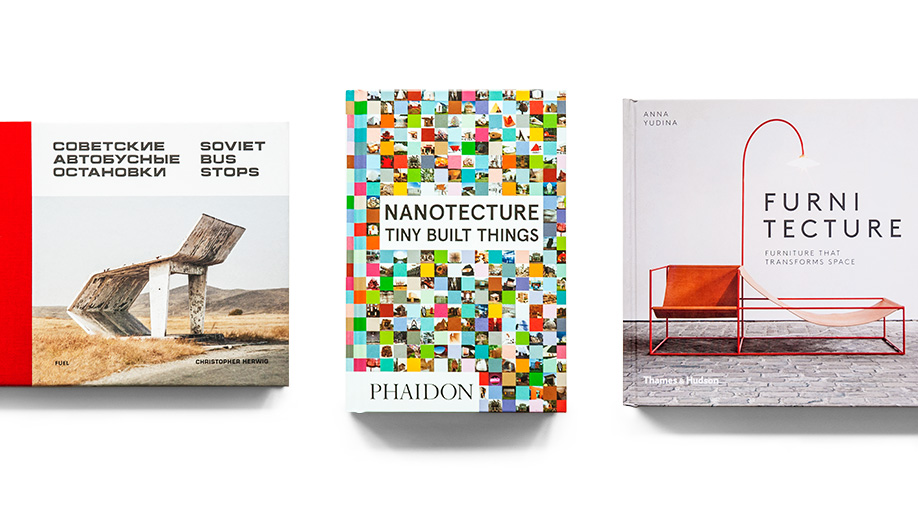

1 Soviet Bus Stops
By Christopher Herwig (Fuel)
When we think of soviet-era Russian architecture, drab Functionalism may be the first thing to spring to mind – brutal grey concrete apartment blocks, their paint slowly chipping, standing against a grey sky. In 2002, photographer Christopher Herwig set out to chronicle Russian architecture at a small scale – specifically bus shelters – and while there is plenty of concrete in his extensive collection of images, it’s rarely drab. Perhaps it’s the low stakes of structures with no windows, no doors and no permanent inhabitants that allowed their designers the freedom to flex their creative muscles; the results comprise seemingly limitless variations of expressive concrete waves, colourful murals and mosaics, and bold polyhedral forms. Set against the backdrop of rural, often desert-like terrains, these diminutive structures stand out like contained explosions of creativity.

By Rebecca Roke (Phaidon)
At the surface, this is a sweet little book full of whimsical novelties – 300 pages of eye candy, with as many projects divided up according to size. Ranging from Micro, (which includes Mexican firm Productora’s triangular doghouses) to Macro (ie. Tom Kundig’s indestructible steel wrapped Sol Duc Cabin), even the largest of the projects maintains an intimate scale that makes them feel collectively toylike. But within this pocket-sized compendium, you’ll find a deeper exploration of design efficiency. These small interventions are often used as tools for material exploration and a colour-coded key informs the reader of the predominant resources used in building each structure, whether it be brick, recycled bottles, timber, packing tape, bamboo, or even velcro.

3 Furnitecture
By Anna Yudina (Thames & Hudson)
This book’s line of inquiry is right there in the name: what happens when you cross furniture and architecture? In some cases, furniture takes on aspects of architecture, as with Antonio Citterio’s Flat.C shelving – a self-supporting structure that doubles as a well – or modular storage that can take on new roles as pieces are added. Other times, architecture replaces furniture (or makes it redundant), as in buildings with stepped floorplans and staggered plateaus that can be used as shelving or seating, like Li Xiaodong’s Liyuan Library. But most intriguing of all are those that fall right in the middle, defying easy categorization: UNStudio’s desk system that grows to the size of an indoor landscape; Luna, CKR’s room-within-a-room where ceiling becomes walls becomes floor-cum-lounger; or Raanan Stern’s Artist Studio (above left), where sliding and pull-out components let walls become furniture and furniture becomes walls.
